For my STEAM project I decided I wanted to focus on Unit 4, The Skeletal System, and even more specifically, fractures and bone repair. The very first thing I focused on and researched was fractures. A fracture is a broken bone. There are severe cases that require surgery to fix and reset the broken bone, those are called Open Reduction. An example of this is if a person broke their femur and it was a pretty bad break, that would be very difficult to heal on its own and would require one to go into a hospital to have surgery that allows a doctor to expose the bone and reset it. There are also not as severe cases where the bone can be reset without surgery. An example of this would be if someone had a pretty minor fracture on their wrist and was just required to wear a brace or cast for a time till their bone healed on its own. Whichever route one is advised to take in fixing their fracture, it needs to be done fairly quickly. Many of our bones actually heal fairly quickly on their own, however they cannot reset themselves, so if one does not take the proper actions to reset and fix their broken bone then they risk having it heal in a broken or bent/not natural position which could cause many issues later on.
There are many different types of fractures our bones can experience. The type of fracture is based on how severe it is, and where it is located. Each fracture has its own name, however many fractures are a combination of names due to multiple fractures occurring at one time and in one area. There are eight main types of fractures. The first type of fracture is called a Transverse fracture. A transverse fracture occurs when a break travels straight across the long axis of the bone. These types of fractures mainly result from traumas like falls or car accidents. The second type of fracture is called an Oblique fracture. An oblique fracture occurs when a break happens at an angle that is not 90 degrees across the bone. These types of fractures mainly result from landing on your bone at a weird angle when you fall or your bone is hit suddenly also from a weird angle. The third type of fracture is called a Spiral fracture. A spiral fracture occurs when bone segments are pulled apart in a twisting motion. These types of fractures result from some sort of aggressive twisting action, like a really bad twisted ankle. The fourth type of fracture is called a Comminuted fracture. A comminuted fracture occurs when several breaks result in many small pieces between two large segments of bone. These types of fractures result from falls from really great heights or things like car accidents. The fifth type of fracture is called an impacted fracture. An impacted fracture occurs when one fragment of bone is driven into the other. These types of fractures usually result from large forces of compression on a bone, like falling and catching yourself wrong. The sixth type of fracture is called a Greenstick fracture. A greenstick fracture occurs when only one side of the bone is broken, this is considered a partial fracture. These types of fractures usually result from a fall on an outstretched arm. The seventh type of fracture is called an Open fracture. An open fracture occurs when a bone breaks clear through and at least one end of the bone tears through the skin and is sticking out. These types of fractures usually result from some sort of high energy accident, like a motorcycle crash. The last type of fracture is called a Closed fracture. A closed fracture occurs when a bone breaks all the way through but the skin around it remains intact. These types of fractures usually result from excess amounts of force or pressure being put on a bone.
Thankfully, along with the help of our amazing bodies and doctors, our bones can heal from these many fractures. Our bodies naturally heal and repair our bones through a process called Bone Repair. The first step in bone repair is the breakage of a bone. Once a bone is broken it also breaks many of the blood vessels around it. The broken blood vessels immediately release lots of blood. Due to the overwhelming amount of blood in the area, and lack of flow of it to other areas, the blood begins to clot. Once the blood fully clots around the brake it is called fracture hematoma. However, due to the lack of blood flow from the clotting, the bone cells in the area will quickly die. This will thankfully be resolved later in the process! The next step in bone repair occurs within four days of the break when chondrocytes get released from the endosteum (a membrane lining the inner surface of a bone’s walls) and form an internal callus. This is where a fibrocartilage matrix is formed between the two bones in an attempt to connect and stabilize the broken pieces. Meanwhile, the chondrocytes, with the help of osteoblast, create an external callus of hyaline cartilage and spongy bone around the outside of the break to also help keep it stabilized. Next, the osteoclasts are released to the breakage area and begin to reabsorb all the dead bone in the area to make way for the osteoblast to come in and begin to make new bone for the area. Over the next couple of weeks cartilage is replaced for solid bone and the external and internal calli (plural for callus) combine to form a brand-new compact bone that is healed of its previous fracture!
The first 8 Images are an example of the 8 fractures I researched. (left to right: Closed, Open, Transverse, Spiral, Comminuted, Compacted, Greenstick, Oblique) The second 6 images are an example of a bone going through Bone Repair. The bones pictured in the videos were made out of hand made play dough.
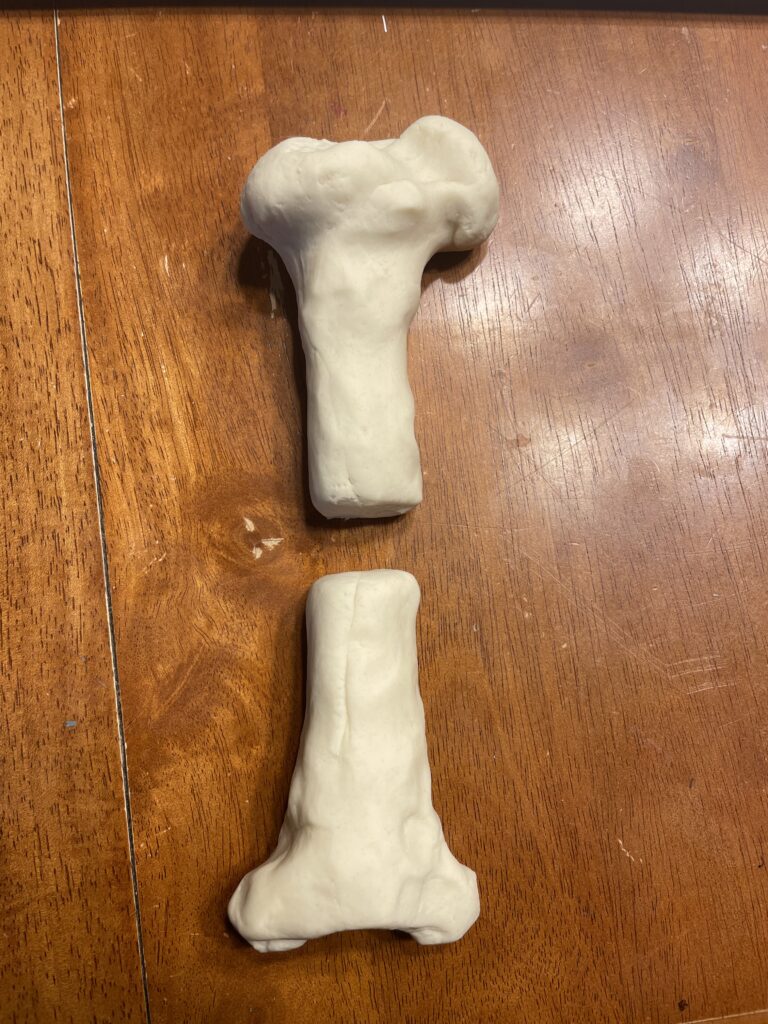
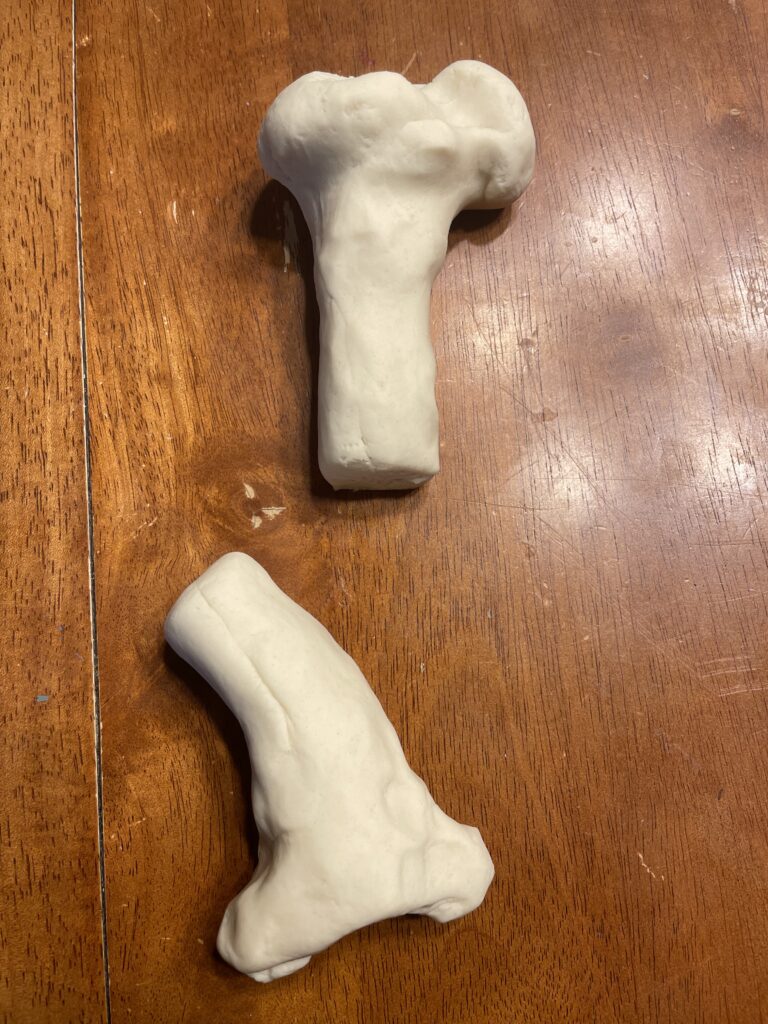
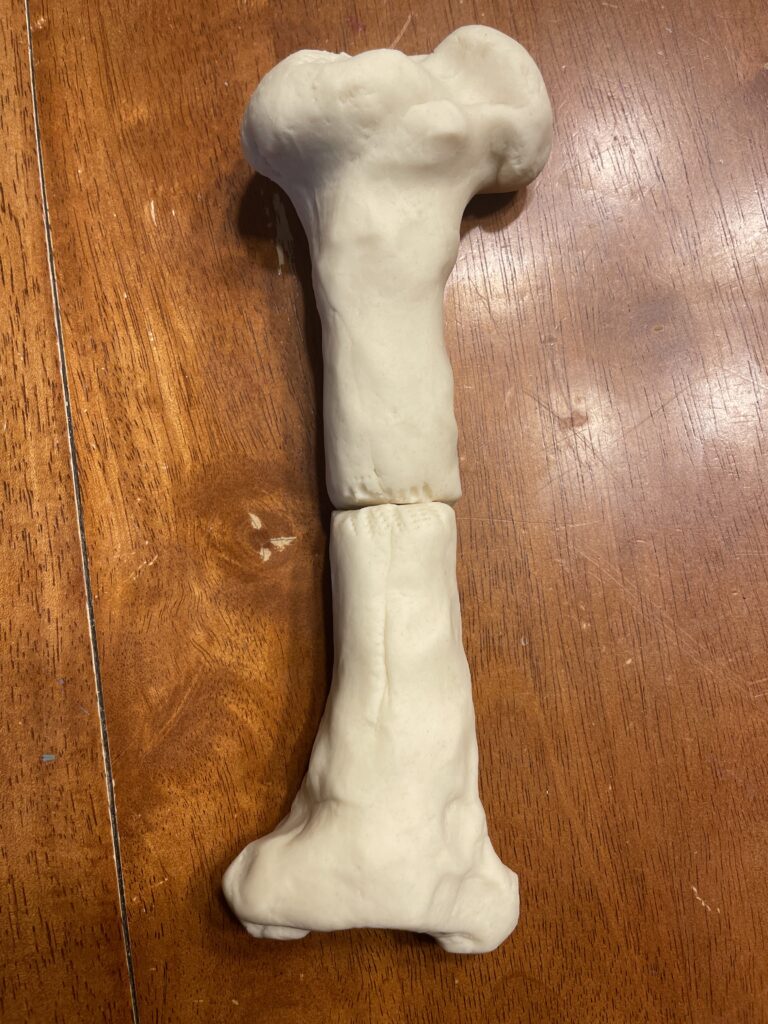
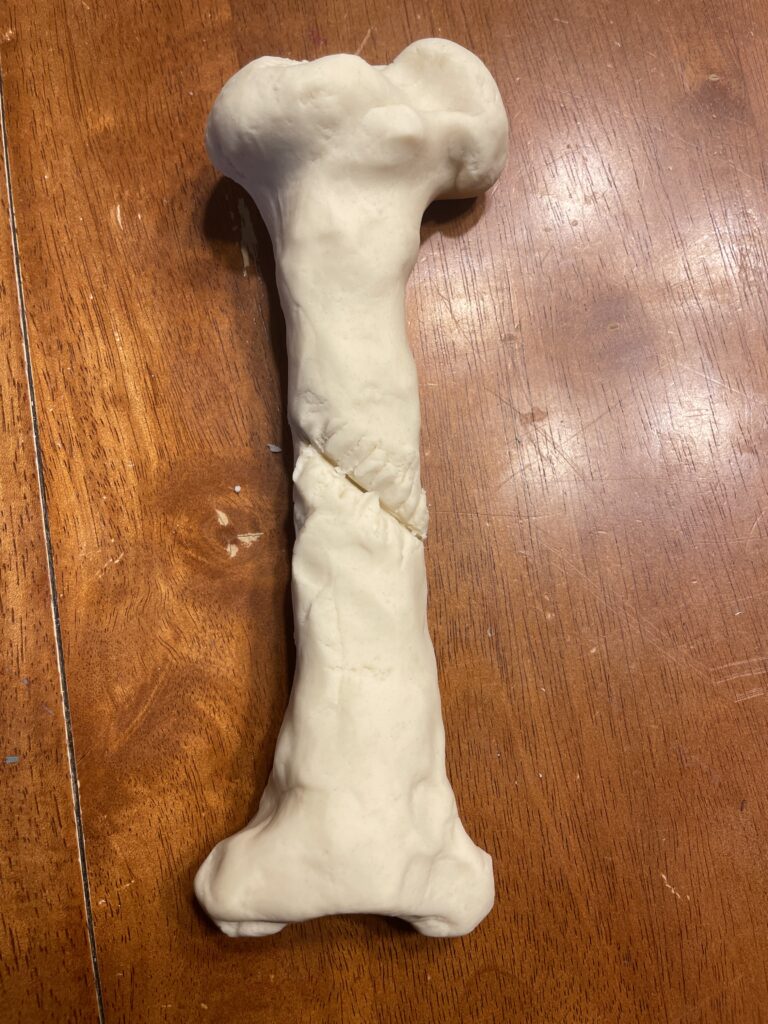
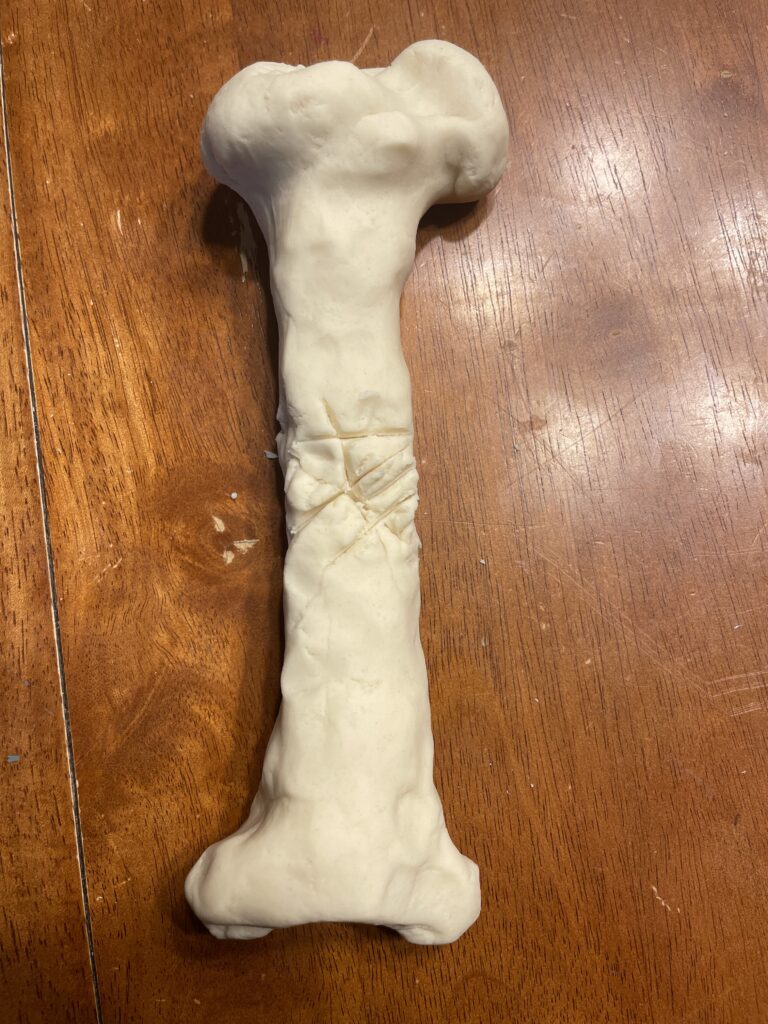
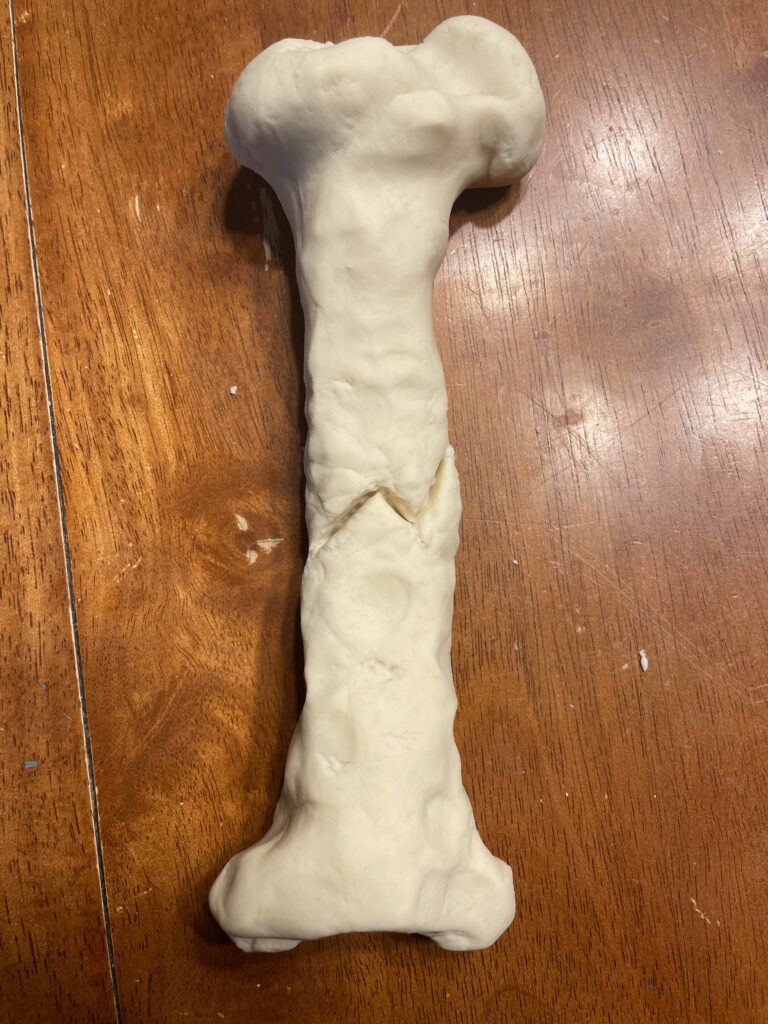
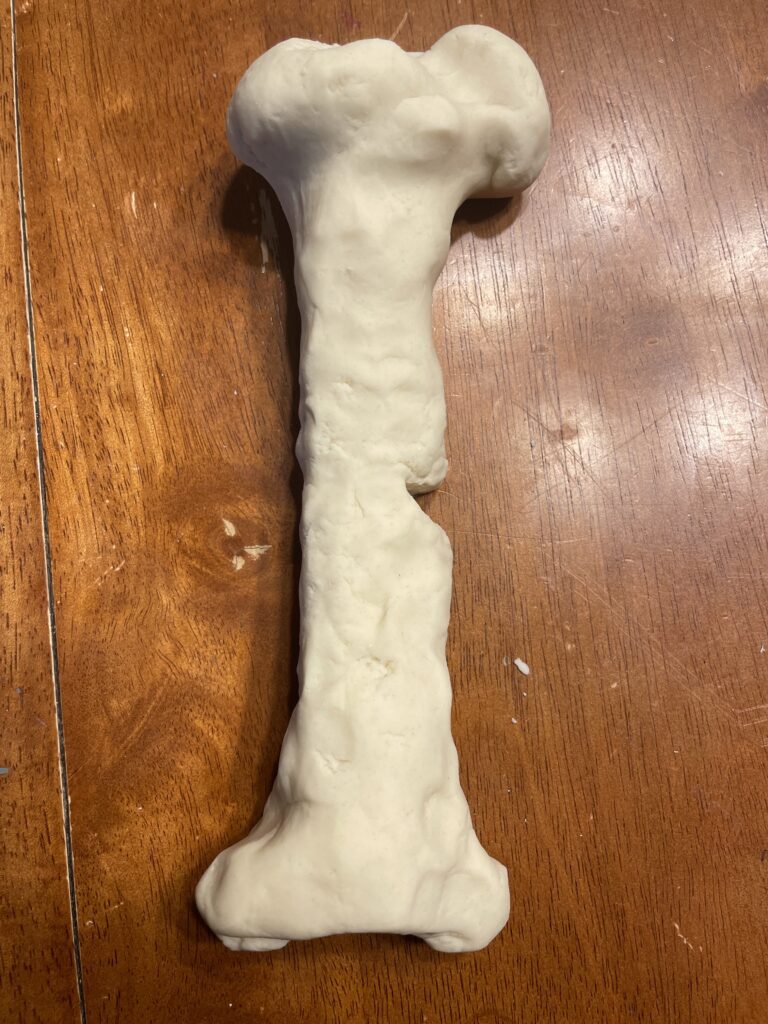
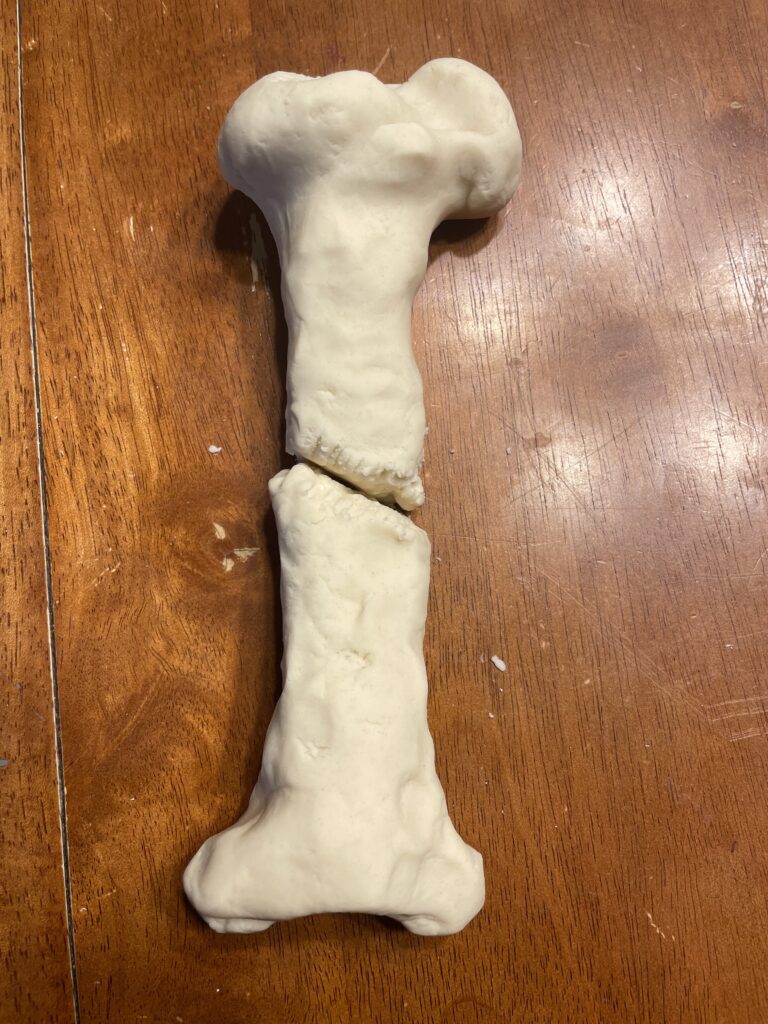
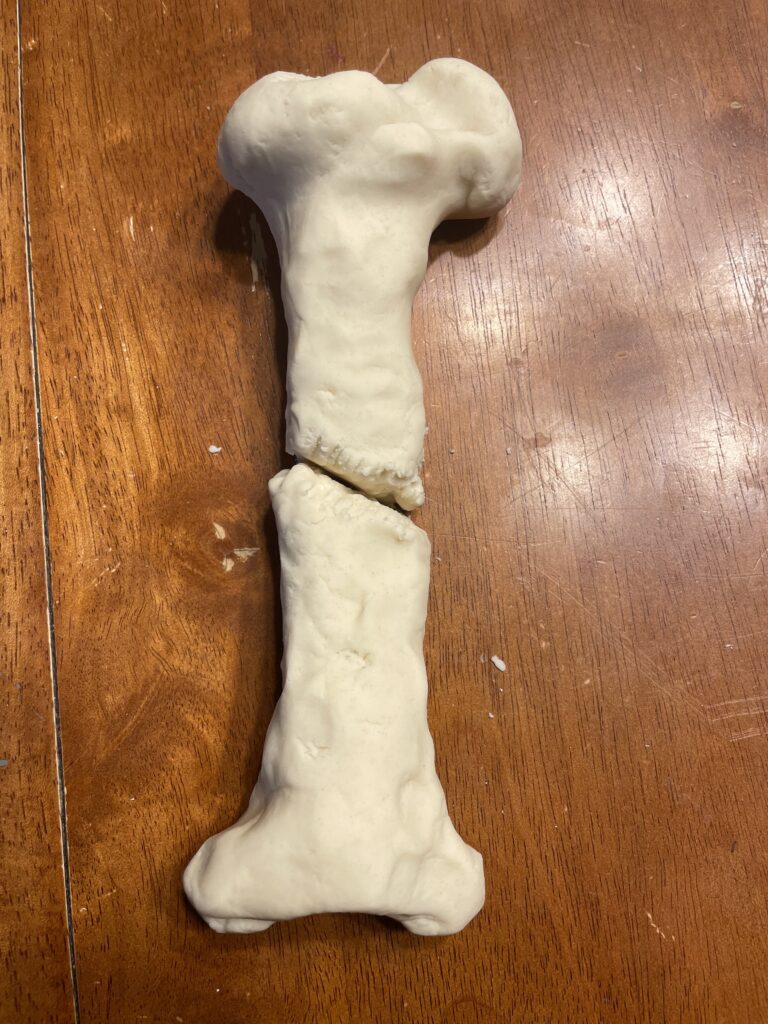
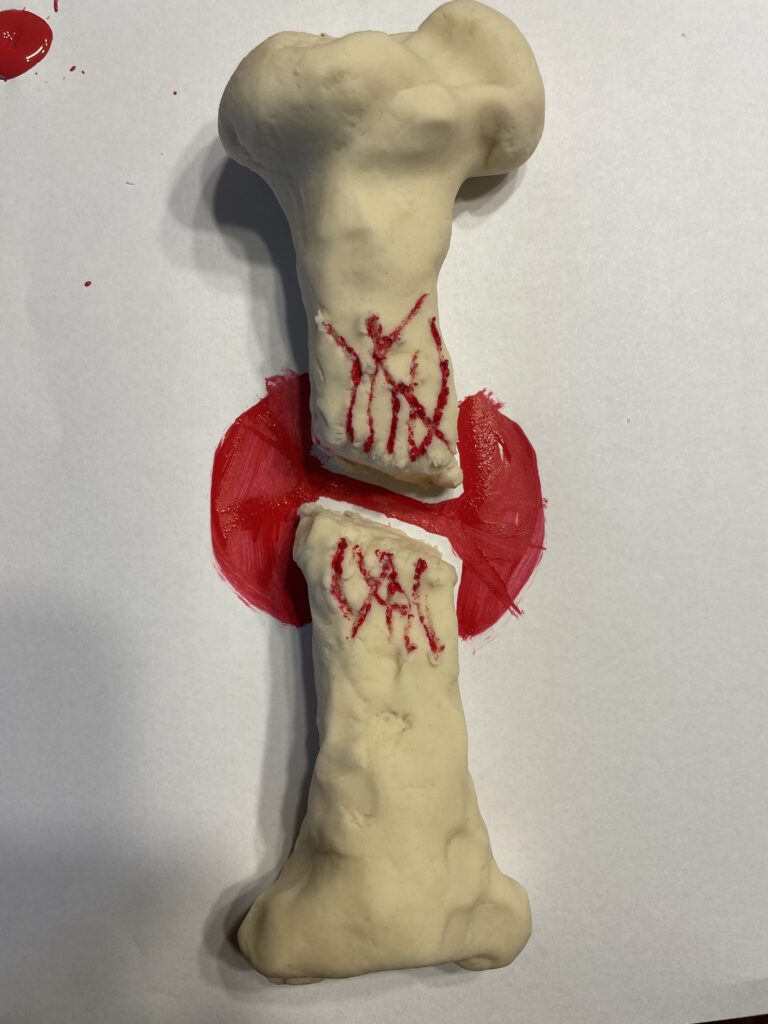



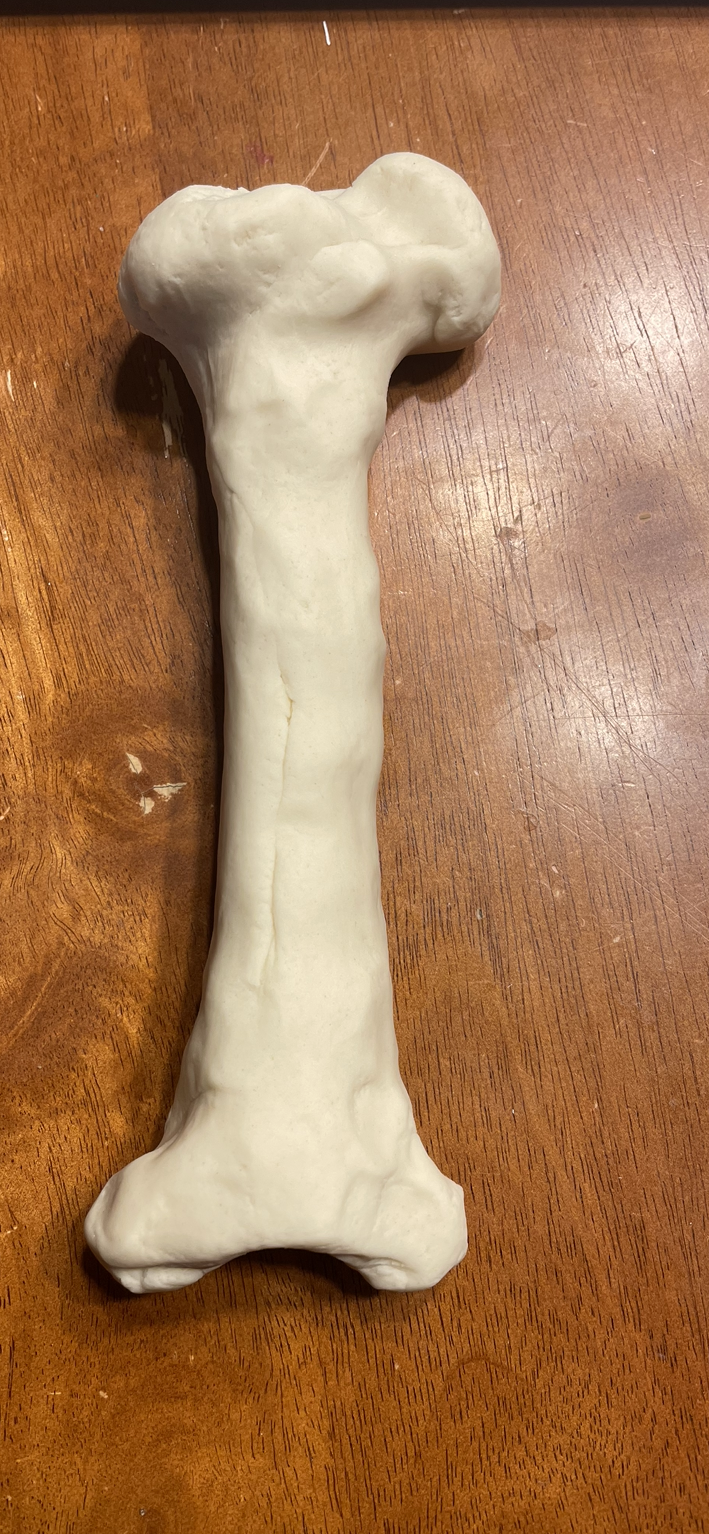
Citations:
Anatomy and Physiology 1 Textbook
Class Lecture Notes
Class Video Notes
“Arm Muscles: Anatomy & Function.” Cleveland Clinic, my.clevelandclinic.org/health/body/22312-arm-muscles.
“Osteotomy (Bone Cutting): What It Is, Procedure & Recovery.” Cleveland Clinic, my.clevelandclinic.org/health/articles/22688-osteotomy.
“Tendon to Bone Reattachment Surgery: Understanding Your Sports Medicine Procedure.” MendTM, 16 Sept. 2019, mend.me/tendon-to-bone-reattachment-surgery-understanding-your-sports-medicine-procedure/.
“Fractures (Broken Bones) – OrthoInfo – AAOS.” Aaos.org, 2012, orthoinfo.aaos.org/en/diseases–conditions/fractures-broken-bones/.
